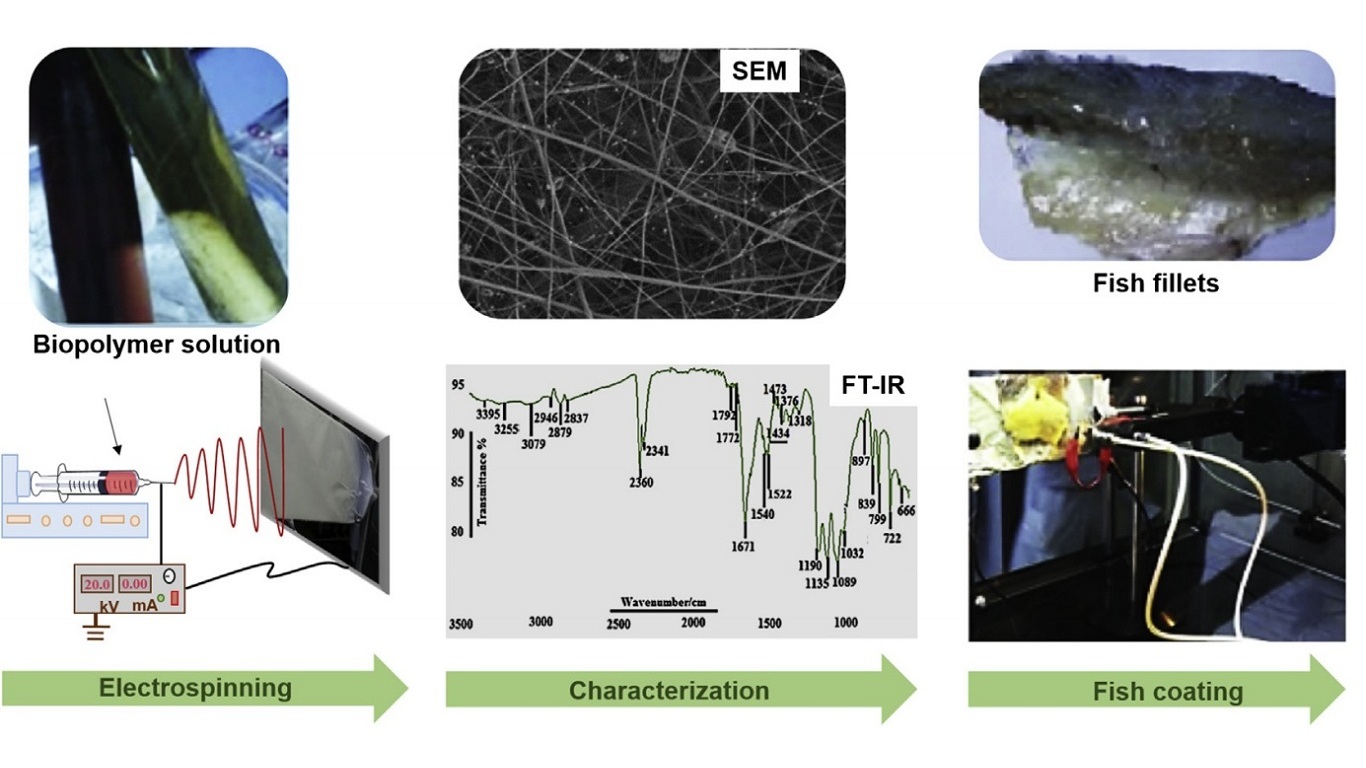Ceylan et al. have reported the fabrication of chitosan-based nanofibers (CNs) and liquid smoke-loaded CNs (LSCNs) using 70% TFA and 30% DCM. Then CN and LSCN electrospun nanofibers have been used to coat fish fillets as illustrated in the Figure. Both of them effectively delay the growth of mesophilic aerobic bacteria, psychrophilic bacteria, yeast, and mold. Moreover, the antimicrobial effect of CNs is better than that of LSCNs. In addition, thymol-loaded chitosan electrospun nanofibers (TLCNs) have also been explored to delay the chemical deterioration of sea bream fish meat. It is reported that chitosan (7%, w/v) and thymol (0.4%, w/v) are added into the mixture of 70% TFA and 30% DCM. The prepared nanofibers are cylindrical, smooth, and beadless. The deterioration of total volatile basic nitrogen (TVB-N), trimethylamine (TMA), and thiobarbituric acid (TBA) during cold storage conditions are indicators for evaluation. TLCNs are able to delay the rapid increase of TVB-N, TMA, and TBA during the tested period. Both CNs and TLCNs have a significant effect on delaying the rapid chemical deterioration of fish fillets. And TLCNs are more effective than CNs in preventing chemical deterioration.


